12. Rosin : Rosin a translucent chemical substance used as sizing material in paper making process. It is used for internal sizing of the paper and act as filler between fibers. Rosin will help the paper surface resist water and liquids. However too much of Rosin cause the paper to turn yellow during aging process. Rosin is also added during the manufacturing of Inks.
13. Resin: A by product of turpentine, this material, either solid or in semi-solid condition is added during manufacture of printing inks to act as binder between the vehicles and pigments which are also used in the ink. It is the resin that bind the pigments and help them stay on the surface of the paper or the substance on which they are printed. Resins also influence the ink qualities like gloss, hardness, and extent of adhesion.
14. Roller Stripping: Roller stripping is most common problem experienced in Offset Printing. The acidity of fountain solution cause the problem of roller stripping. Roller stripping means non acceptance of the ink on the surface of the inking rollers or the roller becomes ink repellent. The ink rollers which are in simultaneous contact with the plate along with the dampening rollers, pick up the traces of the acetic water from the plate and thus their surface slowly gets glazed by the action of acid thereby emulsifying the ink too .
The acidity cause the rollers to become blind or too glazed not to retain the ink on its surface and start repelling the ink. The entire roller surface does not become blind and only when the water droplets stayed on the rollers during running, wherever the droplets were there the rubbing action in those areas cause the blindness and therefore they are found to be in patches. Decreasing the strength or the flow of the fountain solution may help alleviate the problem.
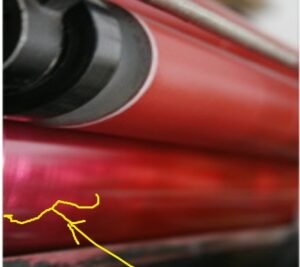
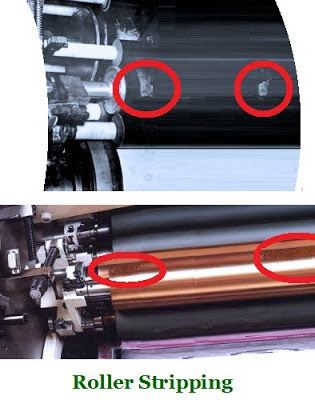
The rollers also gets glazed due to continuous running over several thousand runs.The Copper based rollers have less tendency to roller stripping compared to Steel rollers. In order to overcome the problem, the rollers could be washed thoroughly with a strong metal glaze remover which is available in the market or the other alternative would be to desensitize the rollers with suitable solutions available for the said purpose.
One important question may be arise. Is it true that only the metal rollers become blind (Glazed) ? What about the rubber rollers ? Not only the metal rollers, but also the rubber rollers refuse to accept the ink at some places at some stage, which is a sort of Roller Stripping. Whenever the ink on the rollers dried on the surface of the rollers, or due to the constant rubbing action of the pigment particles of the ink, the roller surface become polished, then those areas rub off the ink without holding them (ink slipping). In such a case the roller will have to be removed and re rubberized.
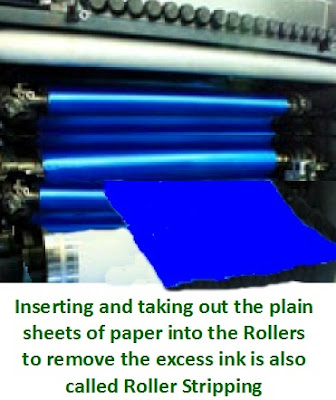
The term Roller Stripping also refers to the act of running plain sheets of thick paper in the rollers to remove the excess ink accumulated on them due to faulty ink fountain flow setting.
15. Rice paper: A type of thin, translucent paper, found commonly used in China, Japan, and elsewhere in Asia, made from the straw of rice, or from hemp and shrubs of the ginseng family. Rice paper is white, absorbent, durable, and widely used in art, crafts paper, as lamp paper and also used to make spring rolls or candy wrappings.
16. Recto Verso: Recto and Verso means both sides of printing i.e front and back side. When a book is opened, one can always note that the first page always begin with the matter in right side page which will begin with No 1, an odd no. The left side pages will always have the even nos. The even numbered pages are called as Verso pages and the Odd no pages are called Recto pages.
17. Relative Humidity: This is an important factor for a press. Relative humidity means amount of moisture content present in the air in the room at a particular given time compared to maximum amount the same room air can hold beyond which it will become dew, in the same temperature.
The RH is expressed in percentage. The RH influences the paper and the printing ink. The Paper when unpacked in the press room can either absorb or dissipate moisture due to the cotton fiber content in them. This affects the dimensional stability of the paper which in turn cause mis register problem. Therefore the ideal room temperature and RH for the Press room is 50-55% relative humidity (RH) at 72°F.
In the case of digital printing the moisture content can affect the toner adhesion, paper jams and the fuser roller temperature. The paper will curl by loosing moisture if the same is not well packed and kept in original packing.
RH and temperature also affects the process dept where the films and photo papers ( made for intricate registered designing purposes ) processed can shrink or expand due to whether condition.
………..Additions to alphabet R to be continued under R/4





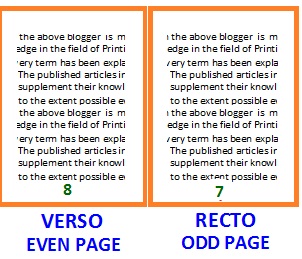
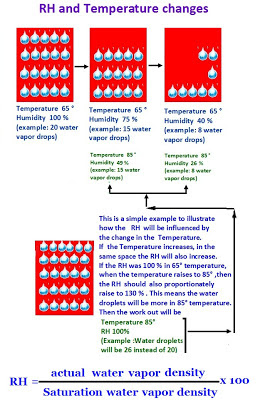













Recent Comments